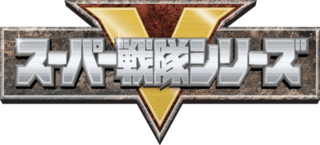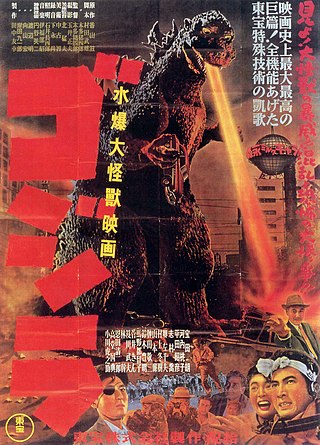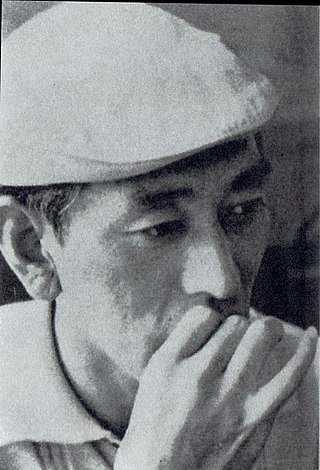
The Tokyu Corporation a contraction of and formerly Tōkyō Kyūkō Dentetsu kabushiki gaisha until 2 September 2019, is a Japanese keiretsu or conglomerate headquartered in Shibuya, Tokyo. While a multinational corporation, its main operation is the Tokyu Railways Company, Ltd., a wholly-owned subsidiary operating railways in the Greater Tokyo Area.
The Nikkatsu Corporation is a Japanese entertainment company known for its film and television productions. The name Nikkatsu amalgamates the words Nippon Katsudō Shashin, literally "Japan Motion Pictures".

The Super Sentai Series is a Japanese superhero team metaseries and media franchise consisting of television series and films produced by Toei Company, and Bandai, and aired by TV Asahi. The shows are of the tokusatsu genre, featuring live action characters and colorful special effects, and are aimed at children. Super Sentai airs alongside the Kamen Rider series in the Super Hero Time programming block on Sunday mornings. In North America, the Super Sentai series is best known as the source material for the Power Rangers series.

Tokusatsu is a Japanese term for live-action films or television programs that make heavy use of practical special effects. Credited to special effects director Eiji Tsuburaya, tokusatsu mainly refers to science fiction, war, fantasy, or horror media featuring such technology but is also occasionally dubbed a genre itself. Its contemporary use originated in the Japanese mass media around 1958 to explain special effects in an easy-to-understand manner and was popularized during the "first monster boom" (1966-1968). Prior to the monster boom, it was known in Japan as Tokushu gijutsu or shortened Tokugi.
The Metal Hero Series is a metaseries of tokusatsu superhero TV series produced by Toei for Japanese television.

Noriaki Yuasa was a Japanese director. Yuasa was the main director of the Japanese film series Gamera, about a giant flying turtle that befriends small boys and battles giant monsters; he directed seven of the first eight films in the series while also providing special effects for one of them. The series was created by Daiei Film Studios after the box office success of the Toho Godzilla series.
Shun Sugata is a Japanese actor.

Engine Sentai Go-onger is Toei Company's thirty-second installment in the Super Sentai metaseries of Japanese tokusatsu television series. It aired from February 17, 2008 to February 8, 2009, replacing Juken Sentai Gekiranger and was replaced by Samurai Sentai Shinkenger. The program was part of TV Asahi's 2008 Super Hero Time block alongside Kamen Rider Kiva. Its footage was used for the American series, Power Rangers RPM and was dubbed into Korean as Power Rangers Engine Force.

Kaizoku Sentai Gokaiger is a Japanese Tokusatsu television series and the 35th entry in its long-running Super Sentai metaseries of Japanese tokusatsu television series following Tensou Sentai Goseiger. It follows a Pirate motif, joining Kamen Rider OOO and then Kamen Rider Fourze as a program featured in TV Asahi's Super Hero Time programming block. It aired from February 13, 2011 to February 19, 2012, replacing Tensou Sentai Goseiger and was replaced by Tokumei Sentai Go-Busters. The catchphrase for the series is "Let's make it showy!".

Daiei Film Co. Ltd. was a Japanese film studio. Founded in 1942 as Dai Nippon Film Co., Ltd., it was one of the major studios during the postwar Golden Age of Japanese cinema, producing not only artistic masterpieces, such as Akira Kurosawa's Rashomon (1950) and Kenji Mizoguchi's Ugetsu (1953), but also launching several film series, such as Gamera, Zatoichi and Yokai Monsters, and making the three Daimajin films (1966). It declared bankruptcy in 1971 and was acquired by Kadokawa Pictures.
Unofficial Sentai Akibaranger is a Japanese tokusatsu comedy drama based on the Super Sentai Series. It is not part of the official line up in Toei Company's Super Sentai franchise, but is instead a self-parody geared towards adults as opposed to a general audience for the mainstream series. The show aired on BS Asahi starting April 6, 2012, and Tokyo MX starting April 9, 2012.

Zyuden Sentai Kyoryuger is the Toei Company's 37th entry in its long-running Super Sentai metaseries of Japanese tokusatsu television series aired on TV Asahi from February 17, 2013 to February 9, 2014, replacing Tokumei Sentai Go-Busters and was replaced by Ressha Sentai ToQger. The program joining Kamen Rider Wizard and later Kamen Rider Gaim in TV Asahi's Super Hero Time programming block. Its footage would later be used for the American Power Rangers season, Power Rangers Dino Charge and its follow up season, Dino Super Charge, and gained a South Korean-exclusive sequel, Power Rangers Dino Force Brave. This is the first Super Sentai series to be shot in Full HD at 1080p, as Shinkenger up to Go-Busters was only shot in 720p.

Shirō Sano is a Japanese actor.

Shuriken Sentai Ninninger is a Japanese television series, the 39th entry of Toei's long-running Super Sentai metaseries, following Ressha Sentai ToQger. It is the third ninja-based Sentai, and the fourth to be based on Japanese mythology and culture and aired from February 22, 2015 to February 7, 2016, replacing Zyuden Sentai Kyoryuger and was replaced by Doubutsu Sentai Zyuohger. The program joining Kamen Rider Drive, and later, Kamen Rider Ghost in the Super Hero Time line-up on TV Asahi affiliate stations, until concluding on February 7, 2016. Ninninger also serves as the 40th anniversary of the franchise. The lead screenwriter for the series is Kento Shimoyama and Kousuke Yamashita serves as the series' composer. Its footage is used for the American Power Rangers season, Power Rangers Ninja Steel and its follow-up season, Power Rangers Super Ninja Steel.

Kenji Misumi was a Japanese film director. He created film series such as Lone Wolf and Cub and the initial film in the long-running Zatoichi series, and also directed Hanzo the Razor: Sword of Justice, starring Shintaro Katsu. He died at age 54.

Doubutsu Sentai Zyuohger is a Japanese Tokusatsu drama and the 40th entry of Toei's long-running Super Sentai metaseries, following Shuriken Sentai Ninninger. It aired from February 14, 2016 to February 5, 2017, replacing Shuriken Sentai Ninninger and was replaced by Uchu Sentai Kyuranger. The program joining Kamen Rider Ghost, and later, Kamen Rider Ex-Aid in the Super Hero Time line-up on TV Asahi affiliate stations. Released as part of Super Sentai's 40th anniversary and Toei's "Super Hero Year", Zyuohger is the sixth series in the franchise whose central theme is animals, after Taiyo Sentai Sun Vulcan, Choujyu Sentai Liveman, Chōjin Sentai Jetman, Seijuu Sentai Gingaman, and Hyakujuu Sentai Gaoranger. The series also has a Minecraft-inspired and Rubik's cube motif. The lead screenwriter for the series is Junko Kōmura.

Kamen Rider Ex-Aid is a Japanese tokusatsu drama in Toei Company's Kamen Rider Series. It is the eighteenth series in the Heisei period run and the twenty-seventh series overall. Toei registered the Kamen Rider Ex-Aid trademark on June 13, 2016. The show premiered on October 2, 2016, one week after the finale of Kamen Rider Ghost, joining Doubutsu Sentai Zyuohger and later, Uchu Sentai Kyuranger in the Super Hero Time line-up.

Uchu Sentai Kyuranger is a Japanese tokusatsu drama and the 41st entry of Toei's long-running Super Sentai metaseries. It aired from February 12, 2017 to February 4, 2018, replacing Doubutsu Sentai Zyuohger and was replaced by Kaitou Sentai Lupinranger VS Keisatsu Sentai Patranger. The program joining Kamen Rider Ex-Aid and later Kamen Rider Build in the Super Hero Time line-up on TV Asahi affiliate stations. Kyuranger is considered the fifth space-themed series whose primary motifs are constellations and Greco-Roman mythology, and it is also the first Super Sentai series to introduce nine regular members in the beginning instead of five or fewer like previous installments. The team later gains three additional members, increasing the number to twelve and becoming the largest team of the franchise so far.















